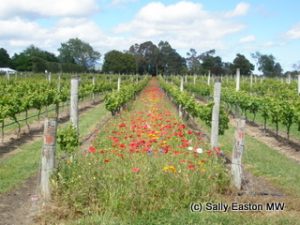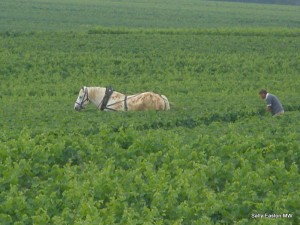European sustainability initiatives
A version of this article was first published in the January 2015 issue of Drinks Business magazine.
When it comes to sustainability initiatives in the wine industry, it looks as though the new world has stolen a march on the old. National codes of practice and protocols exist in most countries. They may be voluntary, and/or self-assessed; they may be certified and third party accredited, but they exist, New Zealand’s and South Africa’s for approaching two decades.
In Europe, the Europe, Middle East and north Africa division of the international organisation for biological and integrated control (IOBC), has been working on integrated pest management (IPM) since 1955 and first published guidelines on the more encompassing integrated (sustainable) production in 1993. Dr. Frank Wijnands, the chairman of IOBC commission on Guidelines for Integrated Production said the guidelines “aim to establish a sort of independent standard that people worldwide can look at to see what they should be thinking about when they are developing their standards”. The ‘continual improvement’ aspect is built in, Wijnands said, because “you can have basic standards and you can have bonus points for doing more. Farmers like this score for additional effort.” In addition, the guidelines are regularly renewed to incorporate innovation, with updated guidelines for grape production being published in early 2015.
The IOBC also endorses this environmental pillar of sustainability, for example the USA’s Pacific Northwest’s wine industry LIVE (low input viticulture and enology) sustainability programme is endorsed by the IOBC. (Additionally LIVE also certifies wine production).
Various national level organisations exist in Europe promoting sustainable farming, which may deal with grape growing (among all agricultural products), but often not the winemaking stage. A certain amount of confusion can exist, notably, that it may or may not be certified, though the trend is increasingly towards establishing verifiable minimum standards. Membership of such organisations as LEAF (linking farm and environment) in the UK, or FARRE (agriculture/viticulture raisonnée) in France, is possible without the producer working to certified standards. Jeremy Boxall, director of LEAF Marque (not LEAF) explained “LEAF is a membership organisation; you have access to tools to improve farming. LEAF marque is an independently inspected standards system and a logo which you can use on labels.” Ability to use the LEAF marque is via an annual audit by independent certifying bodies.
In France, HVE (high environmental value) is the ‘new’ agricultural certification. Eric Fabre, owner and winemaker at Château d’Anglès in the south of France said “we are now certified HVE level 3, the highest level.” It is subject to an annual third party certification, including having “something like 20% of your surface cultivated in wild lands around the estate; only 30% of your spending on the estate should be for dry provisioning, including bottles, cork, chemicals, electricity, fuel [and] you must register everything, including vineyard practices, vine traceability, and full analytic accounting.”
Initiatives are often regionalised, or “focus on one issue, such as biodiversity, pesticide reduction, water use and pollution risks” said Maarten van Helden, associate professor at the University of Bordeaux. His work includes projects in Saumur-Champigny and St. Emilion. But, he added, the charter of Fontevraud is probably “the closest to what one would consider sustainability guidelines adopted by several winegrowing regions. It is a set of guidelines to help farmers see where they can improve sustainability and environmental protection.” It takes into account the wider viticultural landscape and human culture within them.
In terms of wine-specific national sustainability initiatives, Austria is the first European country to instigate a programme, in 2014. Growers undertake an online self-assessment, and from winter 2014/15 a certification will be introduced. Achievement will allow growers to use a logo. Franz Rosner from the federal education and research institute for viticulture and pomology, Klosterneuburg explained “approximately 10% of Austrian winegrowers are organic, but this is only vineyard management. We have to include the whole production chain, from vineyard to filling and bottling.” Nine sustainability parameters build into a traffic light type spider diagram, and Rosner said “there is a more detailed spider diagram for each sustainability category, and growers automatically get three suggestions” to improve.
Italy ran a pilot project from 2011 to 2014, and last year opened up its VIVA sustainable wine programme and label nationally. It is a self-assessed, third party certified system. Pieter Ravaglia, from the directorate general for sustainability at the Italian ministry for the environment, land and sea, said “the first wave of products have the online label” which can be accessed via a QR code on the bottle. It gives a traffic light style banded graph of a wine’s performance against four indicators: product carbon footprint, direct-use water footprint, vineyard and wine production.
Planeta and Tasca d’Almerita were among the pilot producers for this national initiative. Both also belong to the regional SOStain certification project, which started in 2010 and is framed for Sicilian producers.
Where VIVA is said to be relatively costly, for example to get the product carbon and direct-use water footprint parts, Ecoprowine offers a non-certified, self-assessment programme, whose goal, said Gianni Trioli, president of Vinidea, one of the members of the Ecoprowine consortium “is to allow small farmers, who are the majority of producers in Europe, who cannot afford certification because of cost and time, to improve sustainability, and to have a logo which shows consumers they are in the process of improvement.”
Such independent initiatives exist in other countries. Terra Vitis in France is possibly one of the better known, having started in 1998. More recently, Fair and Green in Germany launched last year. Their chairman, Keith Ulrich said “not only is it a certification, it is a constant process to improve business into a sustainable future.” Producers must improve by 3% every year. Its first year has garnered 20 members, and they are a pretty stellar cast. Founding member Axel Neiss of Weingut Neiss said “at ‘Fair’N Green’ I particularly like the idea of considering aspects of my business which are not relevant to organic grape growing but do have enormous input on the ecological footprint we leave, such as the usage of lightweight bottles in export, and collecting and using rain water for cooling our tanks.” He added the programme “also considers economic and social aspects, [including] our responsibility towards employees, neighbours, suppliers and customers.”
The European picture on sustainability is complex and active, with independent and regional initiatives, some focusing on the environmental pillar, others including social and economic pillars, via various parameters. It just takes a bit more ferreting around and understanding what (exactly) is being measured. The impetus for national programmes is likely to grow.





